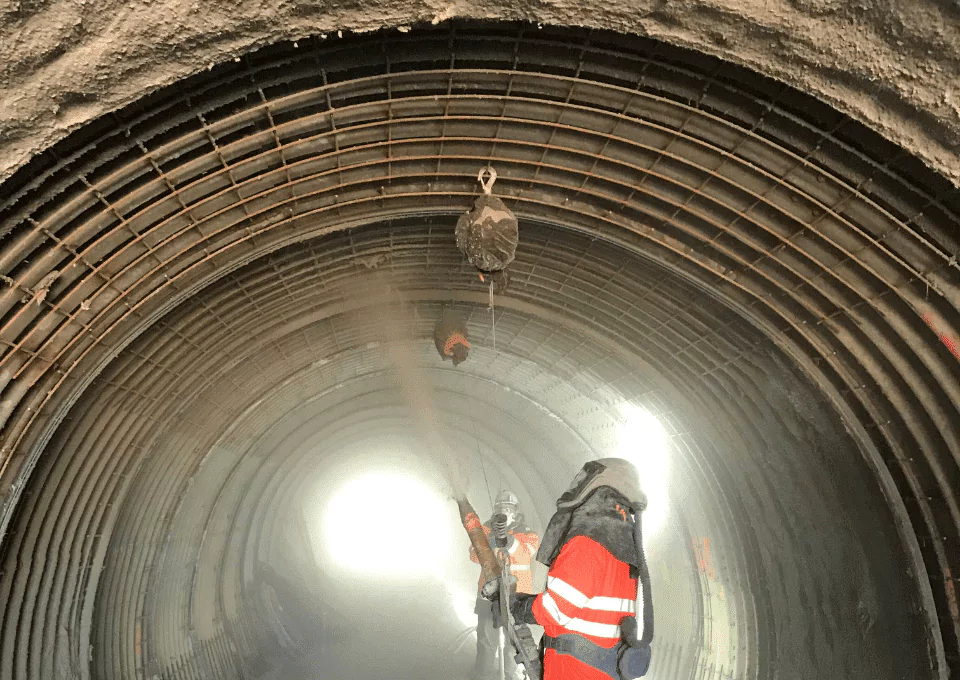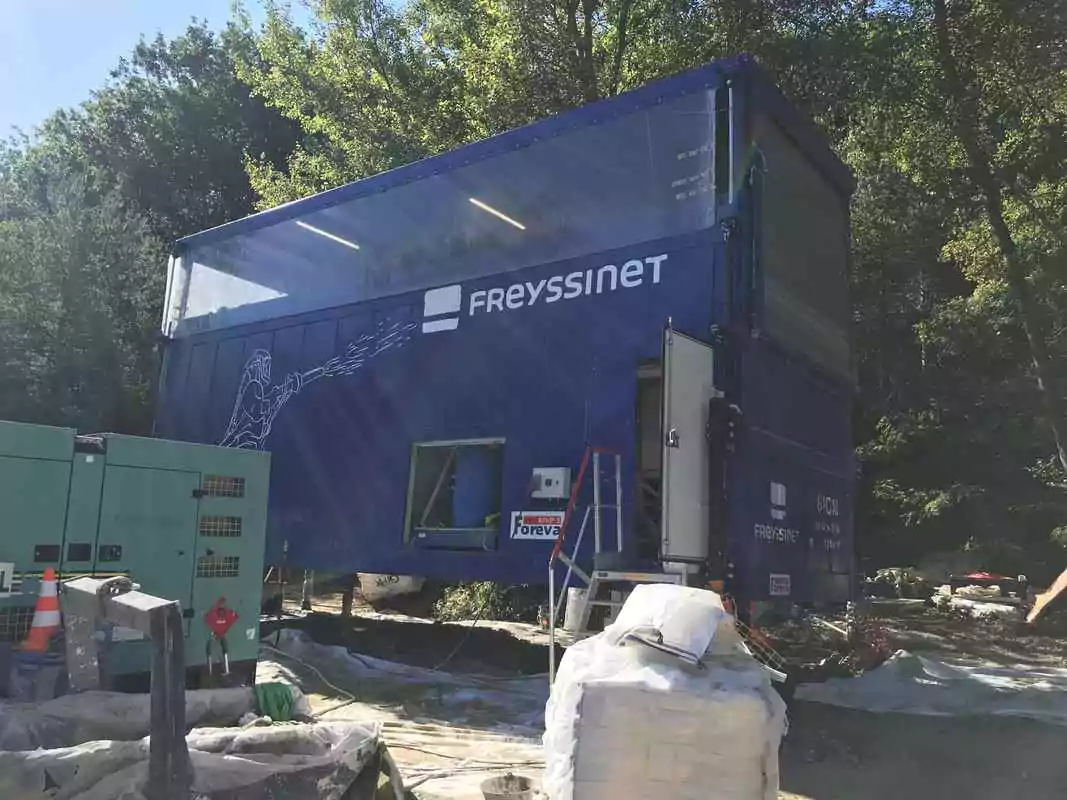The first implementation of the system, to repair corroded steel culverts under a highway, was funded through an innovation programme backed by the French Ministry of Environmental Transition.
Development and verification of the new system involved three key stages:
1- Adapt the concrete mix design and the application equipment.
Since UHPFRC is usually a self-compacting material, a suitable formulation was necessary to enable it to be pumped and sprayed onto vertical surfaces, or overhead. This was designed by LafargeHolcim Ductal, whilst Freyssinet developed the on-site manufacturing, pumping and spraying equipment.
2-Validate the calculations
The second stage involved validation of the calculations required for the design of a repair project, as well as developing methods by which the Ultra High Performance Reinforced Sprayed Concrete could be applied to a corrugated metal pipe culvert.
A test area set up by Freyssinet enabled load tests to be carried out on a corrugated metal pipe to which the UHPFRC had been applied, measuring the deformations versus the applied loads. In addition, bending tests on corrugated flat sprayed samples were also performed to obtain more accurate data.
3- Assess the technique under site conditions
This meant choosing a test site to demonstrate that a corroded corrugated steel culvert could be repaired and reinforced by applying a thin UHPFRC layer. This solution provides structural reinforcement using a layer of the spray-applied material with a mean thickness of just 6 cm. It preserves the semi-rigid mechanical behaviour of the structure while minimising the clearance reduction.
The high mechanical performance of UHPFRC means that the quantity of material required can be cut by two thirds, in comparison with a traditional reinforced concrete solution. This reduces the intervention time and logistics, and hence also the disruption and environmental impact. It enables buried culverts to retain the same headroom and does not reduce the flow capacity in case of hydraulic culverts.

